-
Posts
12 -
Joined
-
Last visited
Content Type
Forums
Detector Prospector Home
Detector Database
Downloads
Posts posted by Nickw
-
-
Hi Everyone,
Thank you again for the replies and helping. Hence forth I'll try and keep things simple by replying in one post. I realize now replying to everyone just plugged up the thread, plus I ended up repeating myself. Which makes it harder/worse for everyone. My apologies.
First to share, In trying to learn more about coils, I came across a thread. I wish it had read this thread, before starting this one!
https://www.detectorprospector.com/forums/topic/529-big-coil-for-gpx-5000
The entire thread is worth reading, but I'll pull a few pieces of relevant info over.
From Steve:
QuoteRemember that depth is more closely related to coil width than length. What you are talking about is 14" coils that are stretched out. They gain a smidgen of depth over a 14" round coil but not much. What you are really gaining is ground coverage and often covering ground is the name of the game.
From Jonathan Porter:
QuoteCoverage and depth are often confused/mixed in together when discussing larger coils....
My all time favourite coils sizes are 14" round in tight hard to work places like gullies and washes, 17" elliptical NF for general prospecting chores, 18" round for the general deeper ground and 20" to 25" round for those super deep places that are not too big an area but specifically suitable for careful detecting chasing a lump at depth.
This all makes great sense, and the understanding is hugely helpful.
Seems like the 11' round and 17x13 might be an ideal primary combo for me. 17x13 will help me cover the large areas faster, with a hair of depth. The 11" in the more wooded areas and steep slopes. I can add a smaller elliptical when I get into tight quarters.
As for outright depth, hopefully Minelab does release (or allow) a larger depth focused coil. From what JP shared, maybe a 18 or 20" round would be a good all around compromise for everyone? It would help me with what I'm searching for (pun intended). 😉
To reply to people:
@phrunt said:
12 hours ago, phrunt said:I think it doesn't matter which one you buy, you'll always wonder if the other one would have been better. That's at least how my brain works 🙂
Isn't that the truth! My brain works the same way. Which is why I try to preempt it with reading, and trying to develop a more solid understanding before I buy. I've decided I really like the idea of the 6000 now, and waiting to see what comes down the pipe, there are several ways I could go after. No local agents, I'm ordering blind, thus all the reading and questions. Thanks.
@geof_junk Thank you. I found this very helpful. I wish I had discovered these threads before I launched this long post. I could have saved everyone some trouble.
@jrbeatty Thank you for sharing. I'll dive in and read the thread. Based on a quick scan, that nugget looks lovely. I wish we got things like that around here. Age wise, I'm somewhere in the middle. Hmmm, I think this means mid life.
@Gold Catcher Thanks for sharing. I wasn't thinking the 6000 was a beginners machine or inferior tech, as much as 7000 can favour more advanced users who can understand its nuances. I'm game for the benefits I read about with the 6000. I just needed to better understand how coil design and size related to depth. Quite frankly, I wrongly assumed it was the 17" over the 11" was giving depth, where as Steve shares above its the width. So 11 vs 13, not much more, but a little. I'll grab glass of scotch and jump into the x-coil thread. I am going to buy a 6000, use it, learn it, enjoy it. Then wait and sees what else comes down the pipe. Thank you for taking the time to respond.
@Northeast Gotcha. thanks for clarifying. It is all making more sense to me now.
@MSC I may yet consider an older GPX with large search coil, just for those area where I want to punch really deep. In the meantime, I'll also wait and see what else is released. Thank you, I think I will very much enjoy a 6000.
Thanks again everyone,
Nick -
3 hours ago, Aureous said:
Potential expected gold size is important...the 7000 pulls away from the 6000 (in the depth match) when multi-gram or multi-ounce sized gold could be anticipated. Because this isn't a major factor for you AND narrow coils are a must when working rocky, river oriented terrain (which the 7000 lacks), then once again, the 6000 wins the contest.
In our area, we're primarily looking at multi-gram. I shared on the previous page, but primarily .3g to 5g.
Multi ounce is the rare exception, I wish it was the norm. 🙂
And as shared, the river has been heavily worked over. I'm not working there. I'm getting off the beaten path hunting for older previous deposits. Of which, sometimes there is lots of overburden and covering materials. Or trying to detect/punch into a hillside, or hydro cannoned bank.
I do apologize for the longer replies. I realize it makes it more work to pick through, and see what I'm saying. Sorry. Thank you for the help you've provided thus far. It is very much appreciated.
2 hours ago, geof_junk said:Depth, sensitivity, weight are not the major factor to consider, it is gold yield. Depth and sensitivity depends on size of gold being found. Note the old rule of thumb is that to double the depth you need 64 times more amplification ( therefor battery uses is massively increased) To a small degree depth can be increased by having a larger coil ( depth cuts out at the meter/yard mark...Doubling the coil size will not double the depth maybe 20% increase).
So yield is your goal ..... Find the size and depth for the area you will detect and set your self up with a detector that will allow you to do the 8 yours ( or the time you detect for) that is comfortable, allows full concentration the whole time.
From the feed back you have got and the selection you have asked for GPX-6000 or GPZ-7000 the best, is in favour of the 6000. If you make the wrong choice with the 6000 I am sure the ounce or two to swap would be found soon, providing your location is worth doing for returns (not fun) in no time.
This post is a light bulb moment. Thank you! 👍
I wasn't aware of the 64x rule, but it makes sense. I'm aware of inverse square (and use it a lot). Makes total sense now. Thanks for sharing 🙂 The light went on.
This really helps me understand the relation with size and energy. Its very helpful. Thank you. I'm starting to understand.
All day comfort makes sense. As does gold yield. Although this isn't just a financial equation for me. I also want to have fun, it's a hobby. And I enjoy the hunt, and like the idea of a little larger pieces. Even if it's less yield when I do. I like variety in my days and weeks. I think thats part of the reason I wanted a well rounded machine, and why I was so intent on trying to understand the overall picture.
As I shared above, I am now favouring the idea of a new 6000. Then I can see what happens with large coil releases (for those times I want to try that hunt), and/or get a dedicated used machine for this. I didn't even think of the idea of a trade, but that makes sense too.
Thanks again.
2 hours ago, jasong said:Depth isn't as important as you might be thinking it is. If you are in mostly undetected country, then most of the gold within reach of a 7000 is also still within reach of a 6000. The two are separated in terms of inches, or less depending on the coils and nuggets.
What is most important at your experience level is learning to find good gold first, and the 6000 is built for that type of exploration. In steep, vegetated terrain, the GPZ is very difficult to use. And the 19" coil isn't a whole lot deeper, but is a whole lot heavier. It's the last coil I'd ever consider using up in the mountains, in fact I'd never use it for anything personally. Also: in highly uneven mountainous terrain, or working cuts and steeps, the bungee/harness doesn't help much at all.
The 6000 is purpose built for working steeps, finding patches, and general exploration. The 7000 is built for getting another few inches depth in patches you've already found, or other known ground where you suspect the gold is hiding inches beyond what the 6000 can hear.
In glacial terrain the depth of the detector isn't nearly as important as learning to find shallower ground. Glaciers leave gold so chaotically distributed that prospecting skill is far more valuable than having the best detector, and IMO the 6000 is the best detector by far to explore with and develop such a skillset.
"Separated in terms of inches". That is very helpful. I wasn't sure if the Z would be punching 20-40% deeper.
In terms of terrain, I think I've tried to paint a good picture now. The really terrain really varies. I agree about the 19" in the steep areas. I was looking at it for flatter and easier areas, where the extra depth would be nice.
Thanks for your explanation/summary of the 6000 and 7000, that's really helpful. It is not just the answers I want, I really like having the understanding, the reason behind the answer. This really helps, thanks.
In terms of the glacial stuff. I'm trying to work around it. Shallower ground is what I'm after. I'm trying to high grade. Do things the old timers couldn't do. Detect the areas they opened up with hydraulic cannons. Hunt the hillsides they couldn't detect. Try to find shallow bedrock where it gets near the surface, etc. Plus find the places modern prospectors haven't worked too hard, or better yet, virgin ground. This is the reason I was wondering so much about depth. Your explanations are really helpful here. Thank you!
I just want to fully wrap my mind around things. 🙂 It's both a blessing and a curse.
-
23 hours ago, Aureous said:
With your gold sizes, the environment you will be detecting in, plus your experience with the GM1000....the choice is obvious: The GPX6000 with a narrow coil (the Goldhawk 10x5 or Xceed 12x7). Forget the 17" ellip mono for now....you wont need it in your circumstances. Even an SDC2300 with a 10x5 coil should be better than a Monster....
I'm not really wanting a detector for tight spaces. As shared, the river has been worked over hard. The gold in the river now is primarily smaller which is being annually redeposited. I have been panning it for years. Its not really detector type material. Its material fit for a highbanker.
I'm trying off the beaten path. Looking to find new areas and deposits. Many of the places tend to be more open. Trees have room between them in the more mild areas. Hillsides have room to move, etc... and there tends to be more depth of material. So I'm currently favouring a bigger coil, which can cover more ground, and have some reasonable depth.
That said, I'm certainly happy they are making smaller coils. At some point I will want one. But I have years of area to scan with a bigger coil first.
20 hours ago, Steve Herschbach said:Listen to this guy.
I am. 🙂. I'm trying to soak in as much as possible, and wrap my mind around things.
Thank you for all the effort you've put into this forum. It is much appreciated!
20 hours ago, Gold Catcher said:Coming from the GM, go for the 6000, no question (IMO). Start by using the detector with the lowest sensitivity setting (still amazing) and get slowly used to it. Then, over time gradually dial up the sensitivity but bare in mind that it will take some practice and experience to run the machine efficiently at higher gain or auto. Use threshold-on right away and learn to listed to threshold variations. Also, get the 10x5 Coiltek coil (or NF equivalent)-once available, this will be better for your terrain. I do not recommend the 7000 for you!
GC
Thanks for sharing. I hear what your recommendation is. I do see many advantages to the 6000.
I'm also curious if you can add anything to my depth questions regarding the 6000? As shared that is important to me. Can you help paint a picture how the 6000/17 does compared to the 7000?
In terms of small coils, as shared just above, I'm not looking to poke about in the river. Rather cover ground and find new unworked areas.
Out of curiosity, why you don't recommend the 7000? Is it primarily because of its weight and the terrain? Or because of it's learning curve? Just trying to understand.
I'm happy to put the effort and hours in. Everyone does have to start somewhere. I do understand the weight issue, thats not lost on me. I'm just trying to fully understand each's strength and weakness so I can pick the best overall compromise.
-
On 5/19/2022 at 9:51 PM, tboykin said:
No contest, the 6000. I spend most of my time chasing pocket gold in the PNW woods. No harness, just a backpack and GPX in hand. Try swinging a GPZ with the harness, bungee, and swing arm for a few hours in the brush. Or even just bushwhacking to that mine a mile up the mountain. I did for a year and then got a GPX6000 when it came out.
That and the fact that you are chasing small gold makes it an easy choice to me.
Keep in mind if the areas you are detecting have been worked, you will have days where you dig hundreds of pieces of iron, lead, and tin. I just got off one of those trips and it can be frustrating. But the days where you find some nice gold make it worth it!
Thanks for the reply. The size of the 6000 is very alluring, no doubt there. I actually would like to try swinging a 7000/14 or 7000/19 for a while, even if to just gain some personal understanding and experience with it.
The small gold comment makes sense to me. I just wanted to better understand the trade off with bigger gold and depth.
In terms of bushwacking, this is an area where I have a big advantage. As a whole our forrests aren't nearly as thick as the coastal ones. While there is a mix, they are more arid than people realize. I think many would be surprised. I'll try and take some pics this weekend. That said, we do get a good range. But much if it is open, and has been previously logged. It's not too bad.
As for digging junk targets, I fully anticipate I'll be digging more. There is a lot of old timer trash around here.
On 5/19/2022 at 9:54 PM, phrunt said:I prefer the 7000, but it's really up to the end user, I've had a bad run with my 6000 which doesn't help.
This statement you've said goes for both, although I think more so for the GPX than the GPZ
"Takes more skill. One must work slower and more methodically. Keeping good coil control, paying attention."
I don't think you'll see a big coil for the GPX, the aftermarket guys have already demonstrated that with their planned coil releases. I'd be very surprised if there was ever a big coil for it.
Thanks for your input. Interesting with your skill comment regarding the GPX. I guess once a person gets used to the 6000 or 7000 way of doing things, switching ones mindsets takes some active mental work?
I'm happy to learn the quirks and nuances of the machine I end up with. I know its part of the process.
As for the large coils with the GPX, now that the GPZ is out (and Minelab controls who is can make aftermarket coils), it wouldn't surprise me if you're right. Large GPX coils may have ended with the 5000. Hopefully not. I genuinely hope Minelab realizes not everyone can buy both machines.
I hope they don't artificially limit the 6000, just so the 7000 doesn't feel threatened. I fully anticipate v2 of the ZVT technology to take a good step forward. Thats often how technology works these days. Invent new technology, then refine it. I think the GPZ series is always going to be a step a head of the GPX solely based on ZVT tech.
On 5/19/2022 at 11:03 PM, Jeff McClendon said:If the area you are in has even mild to moderate EMI, you will need the 14" DD coil for the GPX 6000. If you have to resort to using the 14" DD you may still need a harness/hipstick especially in rocky, uneven, mountainous terrain. If you don't have EMI issues and can use the 11" mono with no harness, the GPX 6000 is easy to use, easy to swing and super easy to master.
I have no experience with the GPZ 7000 other than swinging one for an hour a couple of years ago and deciding to move on/wait for something lighter.
I am a longtime GPX 5000/4800 owner. The GPX 6000 with the 11" coil is extremely sensitive compared to the 5000. Currently, I still think the 5000 is deeper on larger gold simply because it can be used with much bigger coils.
Being somewhat remote and shielded by the mountains, EMI isn't bad around here. That said we do have lots of blacksands which makes things harder.
With the 7000, I think I could get used to the weight. I'm about 180cm and 90kg. Would I like smaller? Sure. Could I get used to the 7k with a bungee or arm support? I think so. Although, no doubt, smaller and lighter is much better.
In terms of the 5000 and larger coils, that is why I'm hoping Minelab either makes one, or allows others too. I think the latest in the GPX line with a big coil would suit me just fine.
On 5/19/2022 at 11:06 PM, GotAU? said:Jeff is right, what about considering a used 5000 or 4500 with a larger coil for depth and a 6000 with stock coils for scouting new ground?
This is a really interesting idea, and made me do a 180 mentally. Really, this single idea changed my entire train of thought. Thank you!
For the price of a new 7000 kit and coils, I could buy a 6000 kit AND a used 5000 with a larger coil specifically for depth. Essentially I can have my cake and eat it too. Nice, I like it! 😃 😛
Which then led me to the next thought.....
People seem to anticipate the 7000 replacement with in a few years. Once that happens, an original used GPZ might drop to half of current price? Thus if I get a 6000 now, I could perhaps add a used 7000 later. Maybe for a similar price of buying a new GPZ set up today. I can only hope.In the meantime, the choice is clear. Get a 6000. And see what happens:
- Perhaps a depth focused coil will be released at some point.
- Perhaps do a used 7000 later, once the replacement is released
- Or perhaps the GPZ mark 2 blow all our minds. The size/weight of a 6000, with more depth than the current Z. Or something of the sort. Either way, sell the 6000 and upgrade.
I like the options this approach brings me.
Thank you for putting this idea in my head!
On 5/19/2022 at 11:08 PM, Valens Legacy said:From the gold you have shown us I know that you know where the gold is at.
With that being said if it were me I would go with the 6000 for it's weight. The 6000 is simple to use and once you are used to it, I am sure that it will do you right.
Good luck on your decision and good luck on your next hunt.
Many thanks. Based on the above reply, I am heavily leaning towards the 6000 now.
As for learning where gold is. It has been a process. One which I am very much enjoying. I get to combine hiking and being outside, along with learning about geology. Mix in a little challenge, and the allure of some buried treasure. I'm very much enjoying this hobby.
On 5/19/2022 at 11:10 PM, geof_junk said:NickW I got my first bit of gold (in a pan as a kid with Dad) over 60+ years ago, and have been detecting gold for 40+ years. I have included some gold photos of gold that I have found with old technology VLF and ML_3000 detectors with coils less than 11" wide. These nuggets are the most common size found even on remote virgin patches that I have found. Some of my bigger finds were specimens, I can remember more than 60 ounces of gold from less than ten of them them. As there is a good range of smaller gold in the following photos I would say you would be best to go for the GPX_6000 however if you get hooked on doing flogged deep ground or large deep nuggets I would then buy a second/backup detector with your finds and that would be the GPZ_7000 update when it comes out. The main thing is how you use the detector and the size of the gold you are chasseing.👍 It my birthday tomorrow and since that makes me nearly double your age my views are for an old timer so GPZ_7000 weight might be more acceptable for a young buck such as yourself.😁
Thanks. I enjoy the hunt too.
Having both machines really does seem like the best option. Use each for what they excel at. Thanks to some of the kind advise and thoughts above, I may be able to do this.
Having a second/back up detector is nice too.
I am very interested in trying to find some of the larger deeper nuggets. I know they are there. I think shallow hidden bedrock, or old hydraulic mined banks are my best chance. Which is why I don't want to entirely give up on having a machine with good depth.
On 5/19/2022 at 11:37 PM, jasong said:Nice gold Geoff and I agree with the wording too. If I already owned a GM1000 and wanted to buy just one single detector to use in the Rockies, it'd be the 6000. Just be ready to noise cancel it often if you use the speaker or work close to EMI sources.
The 7000 was an absolute bear to use in Colorado the one day I tried (I dislocated my shoulder falling after trying to detect a steep incline, so trip ended), and having also been to BC, things are just as steep and even more vegetated up there.
It's been long enough since the 7000 release that a new one must be on the horizon soon so it's not really a machine I'd recommend anyone to buy right now really until we see what the next one costs and how it performs.
Thanks for sharing. Sorry to hear about your dislocated shoulder.
I do see the allure to the lovely little 6000. However, I do think I could get used to a 7000 too.
In terms of vegetation, I don't think it's as bad as people think. Or perhaps others are just used to desert, so it seem bad to them? I'm also used to a costal rain forrest, so an inland semi arid forrest (up in the mountains) doesn't seem very bad.
Perhaps it's all relative?
The famous experiment/example with 3 buckets of water comes to mind. One bucket is filled with hot water (around body temp 37c/98.6f), one with cold water (ice water) and the last with warm water (in the middle for temperature). A person puts one hand in the hot bucket, and the other in the cold bucket. 30 seconds later they place both hands in the warm bucket. Even though both hands are now in the same temperature water, the hand which was previously in hot water now feels very cold, the hand which was previously in cold water now feels burning hot. As human we really do measure things on a relative scale. The phenomenon works wether we are consciously aware of it, or not.Taken another step: imagine a previous version of the GPZ which weighed 12.5lbs, the new 7.3lb version would seem like a godsend. The power of the first one, with this new lighter weight... it would fly off the shelves. Or alternatively when contrasting the current 6000 with the 7000. The 6000 seems so much better.
On 5/20/2022 at 2:45 AM, Northeast said:A GPX6 for my mind.
Better for your terrain.Actually optimum for the size of gold you’re targeting.
Not 100% sure but I imagine swinging the 19” coil for the 7000 would last about 1 hr and you’d give up.
Re: coils for the GPX6, at some stage there will hopefully be a smaller, elliptical, DD coil that will eliminate any EMI concerns/hot ground and make tight space use better.I can’t find it but I’m sure JP said on here that when large coils came out for the GPX6 that performance will match (better?) a 5000.
And a GPX6 is heaps cheaper. And when things go really well you can get the GPZ 8000 when it’s released next year 🥷 🥸
Thanks for sharing. It's much appreciated. I know the 6000 is fantastic for the smaller gold. I was just trying to consider the best overall package. Which is why I was wondering so much about the 6000/17 depth capabilities.
From looking more on youtube, most peoples tests do show the 17" mono hits the marginal targets with more authority, then goes a little deeper before it offers up a marginal reading. A 15-20% increase seems somewhat common across the board (compared to the 11" mono).
I do expect the 7000/19 combo to be heavy. It would primarily be on flatter terrain and easier spots. For example, I found a high bench which I don't think has been worked much (based on the age of the trees). Based on the few bedrock outcroppings the river didn't flow there for very long. I would like to be able to work these areas, plus scan for other places where the bedrock gets close to the surface. I might get lucky, or I might find very little, but I would like to try. If I get the 6000, I just want it to do a reasonably good job here. To satisfy my mind if the results are so so.
If you find the posts about larger coils coming for the GPX6, please let me know. As for a GPZ 8000, thats my new plan C above 😉
Thanks again.
-
Thank you to everyone who replied. I'll go through and try to respond to everyone in my next post (if I can).
I can see 64% of you are onboard with the 6000. Mostly because of the gold size, or weight, or both. This makes sense.
However one element which is extremely important to me is depth. I do apologize for my lengthly first post, and I anticipate many people skipped it. But depth is important to me, for reasons shared above. Only a few people addressed this.
Currently (and this *might* change) I am looking at one machine to do everything. Each machine will be compromised in some way. I would like to better understand the nature of the compromises (some of you shared here, and thank you). But big picture, I don't want to pull the trigger on the 6000 until I better understand how it compares in depth wise. We all know the 7000 is better here. But how much better? Please help me understand.
Thanks,
Nick.More replies to come....
-
Here are some photos showing the type of gold which comes out of this area. These are from the Nip & Tuck mine Facebook page. Steve (Nip & Tuck) has a machine digging placer operation and can move a lot of material. These photos are over various years. The deposits do vary.
Note: My gold is nothing like this. Mine has been smaller fine gold panned from the river. I want my gold to be like this. 😉
But this is what's here, once you can get into some fresh gravels. Finding them is the key. I'm hoping a detector could be used to help me find areas quicker.
As a side, Steve was recently on Freddy Dodge's mine rescue. It is worth a watch. As you'll see, some years are better than others. He's had some real lean years recently. Sometimes you move heaps of material and don't get much.
-
Hi Guys,New forum member here. My 40th birthday is coming up, and my wife's onboard with a new machine. I'm thinking the GPX 6000 or GPZ 7000. I can only afford one, plus an extra coil or two. I could use see help deciding. This is not a case of what detector is better; this is a case of which detector is better for me.
Overall, I have done a lot reading on the forum (and watching youtube videos) trying to get up to speed. Many thanks to all who post here sharing their experience. Thank you Steve, JP, and everyone else who has contributed. Seriously, thank you guys for the wealth of knowledge.
For fun, I've also set up a poll. But I would very much appreciate written responses and dialog.
I realize this got long. But I wanted to explain my use case. I've tried to summarize, skim over as you see fit.
***************
Background info:
I'm a long time hand panner, I also run a Gold Monster 1000.
I'm primarily work in the Rocky Mountains in BC Canada; on the site of a major gold rush (Wild Horse River). Terrain wise, it's very similar the Rocky Mountains in Colorado. I'm currently working a mix of friends and acquaintances claims, or other claims in the area. Sometimes (rarely) I make trips to other regions.
Since the 1860's gold rush, the river and source creek have been heavily worked over the years. Typically I stick to areas less worked. Lots of hillsides, newly washed out areas, old tailings, water cannon bowls (aka; hydraulic mining), old possible gravel channels, difficult to access old ledges, etc...
Outside of the river, typically there is 12-15ft of material to bedrock. Either covered with layers glacial till, or old river gravels from as it moved, or both, plus overburden. The bedrock does surface in places. The area's where it peaks out have been previously worked, but I'm hoping they could be reworked with a better detector. I would like to find areas where the bed rock gets near the surface (say within a few feet), but doesn't break through, and thus are still virgin ground. These represent great potential if I can find them.
As a side, not many people seem to use detectors up here. Those that do usually have a Gold Monster. I've been told most people who have shown up with them (non locals) usually give up. Partially because of the limited access to claims (it takes time to make friends), and the lack of understanding of the area, and how it's been worked. As I've shared, it's been heavily worked. Almost all the easy gold is gone. Part of why I want a detector to try and speed up the discovery of new areas. Another thing I would like to try is, to dig holes in areas which are known to be gold bearing, and try to find pockets with the detector. Extend its reach so to speak. Which I can then work with a high banker if water is available. Or with a detector where access is remote/difficult and/or water is no longer available.
So there is really a mix of scenario's and use cases. I would like to use the detector both as a primary and secondary tool.
***************
Gold wise:
This varies depending where you are, and the claim. Beyond fine gold which is continually moved and redeposited in the river, small pickers are the most common. Many in the 0.3 - 0.5g range. Large ones are in the 1-2 gram range. Really nice larger ones are up to the 5 gram range. Anything over that would be considered exceptional in this area (based on what's being found currently, that people are willing to talk about anyways 😉 ). This type of variety would represent a regular season for those who work a good claim. However, larger nuggets do come out. The largest I can personally vouch for is just over 2oz (seen below). The record was 36oz during the original gold rush. I've shared photos below for reference.
***************
Ground wise:
There are lots of hot rocks here, of multiple types. Lots of iron, so heaps of magnetite and some pyrites, galena, etc). I can't say it's as bad is Australia, but it's not great. Even the gold monster jumps back and forth. I dig all targets.
Not to mention all the old timer trash, and even more modern trash....
I do wonder if the DD coil will outperform the mono's here. The 19" Super D looks very attractive.
***************
Now, 6000 or 7000?Here's a quick summary of my understanding, starting with the high points:
- 6000: Great all around machine. Excels at small (sub gram) gold. Super light, easy, and fun to use. Very zippy. Ergonomics are great, which is not to be underestimated. Over all good value for money. Almost like a Gold Monster, SDC2300 and GPX5000 in one upgraded machine, which is better than all of them, while being lighter.
- 7000: Takes more skill. One must work slower and more methodically. Keeping good coil control, paying attention... but once learned it's a fantastic all around detector. What it gives up in small gold (where the 6000 excels) it gains with big deep stuff. It's still king, but very heavy and much more expensive.
Weak points:
- 7000: I see three weakness. Its first weakness is with small gold, which can be mostly mitigated with a NF12 coil. Its heavy weight will always be there, so wear a harness and deal with it. Finally, it costs a lot more in Canada. Compared with a 6000 kit + 17", the 7000 kit + 19" costs 54% more. I have no idea why the price jump is so big here. Plus more money for the NF12 on top of this.
- 6000: Weak points are depth and heavy mineralization. I can deal with the mineralization, in that I dig all targets (although less digging is better). But its depth capabilities is what I'm most wondering about. How much can this be helped with the 17" mono coil? And what is the likelihood a better coil for larger deeper gold will come out? Something like the 19" Super D would be ideal (Minelab, please make a larger D coil which can punch deep! Or let someone else. 🙂 ). These are probably my two biggest questions. As trying to find shallow bedrock is something I see good potential with. Otherwise the 6000 seems like the machine for me.
****
Help me Decide:Kit wise, I'm thinking either:
- 6000 kit. Plus the 17" mono. And I pray a bigger coil (for larger deeper gold) comes out eventually.
- 7000 kit. Plus the 19" and probably a NF12. I think this covers all bases.
Both machines make trade offs. Both are good. I'm just trying to decide which is right for me. I go back and forth here.
- The 6000 fantastic for sub gram stuff. I much prefer its price and weight. I'm just not sure how much benefit the 17" mono will bring to depth. If I knew a larger coil would come out later, to help me hunt deeper, I would probably take the 6000. As I want to find areas of shallow bedrock close to the surface, and speed up the discovery of new patches which can be worked.
- 7000: The 7000 does do everything. At the expensive of price and weight. The NF12 closes the gap on the small stuff. The 19" is great for the deep stuff. Overall a great combo. Price wise (while expensive) I can probably swing it (pun intended 😉 ). Buy once, cry once. But the weight never goes away...
I would love to get everyones input. I think depth is potentially my biggest concern (based on how close it gets), with weight, then price being close behind.
How much depth does the 6000/17 give up to the 7000/19? Secondly, what are the odds a depth focused coil will come out for the 6000? If one does come out, how close to the 7000/19 do people think it will get?
Depth could potentially get better with a new coil (if Minelab allows it). However, weight and price of the 7000 never will.
I can see pro's and con's to both for my situation. Ideally I would have both, but I need to choose one. Thus I defer to the greater community who has vastly more experience, many of whom have run both machines at length.
Please help me decide. I'm flip flopping.
Many Thanks,
Nick -
Thanks Guys.
I'm currently debating the 6000 and 7000. I can only get one, so I need to choose. I'm reading everything here before I ask questions. But I do have a one or two questions. I may ask them soon.
Hi Valens, I haven't been over that way yet. It's about 5hrs from here. Sounds like you have a good trip. There's quite a few good gold areas in BC. 🙂 Although something to keep in mind, part of the south side of the lake/creek is in a provincial park. In BC it's illegal to prospect in provincial (and national) parks, without the written approval of the park warden. I can't say I've ever heard of anyone getting approval, but I also haven't heard of anyone asking either. Perhaps a good thing to look into.
GB, thanks. I do always check the holes again after I dig something, incase there is another target. Thus far its always more trash, but fingers crossed. The further I get off the beaten path, the better things seem to get. Last fall, I hit a patch of square cut nails up a hillside (above the primary gold bearing creek which feed the lower gold rush) while detecting around trees and boulders there. Some old timer must of went for a slide and lost a bunch, I found 8-10 maybe. Each one of them lit up as a big target. Each one required a 12-18" hole. I know it's just a matter of time before I get lucky. As if a bunch of trash is still here, then it's a better chance it hasn't been worked by someone else with a detector yet.
Cheers,
Nick -
Hi All,
New member from Cranbrook BC, Canada. I'm a long time hand panner, and started running a Minelab GM1000 last year. I've been working on some friends claims up the Wild Horse River and Boulder Creek (the site of a large/famous gold rush in BC). One of the guys up here (Steve) was recently on Freddy Dodge's Gold Rush.
Detecting wise, I haven't had much luck yet. The area's I am working (even though they are claimed) have been heavily worked before, and very likely previously detected. My little VLF isn't going very deep, unless the target is huge. I am wanting to upgrade to a better PI machine.
Interesting things I've found include lots old square cut nails, and some some barbed rock wedges. Otherwise, lots of old timer trash, even more modern trash, pyrites, iron ore, and hot rocks galore....
Just thought I would introduce myself and say hello.
Cheers,
Nick



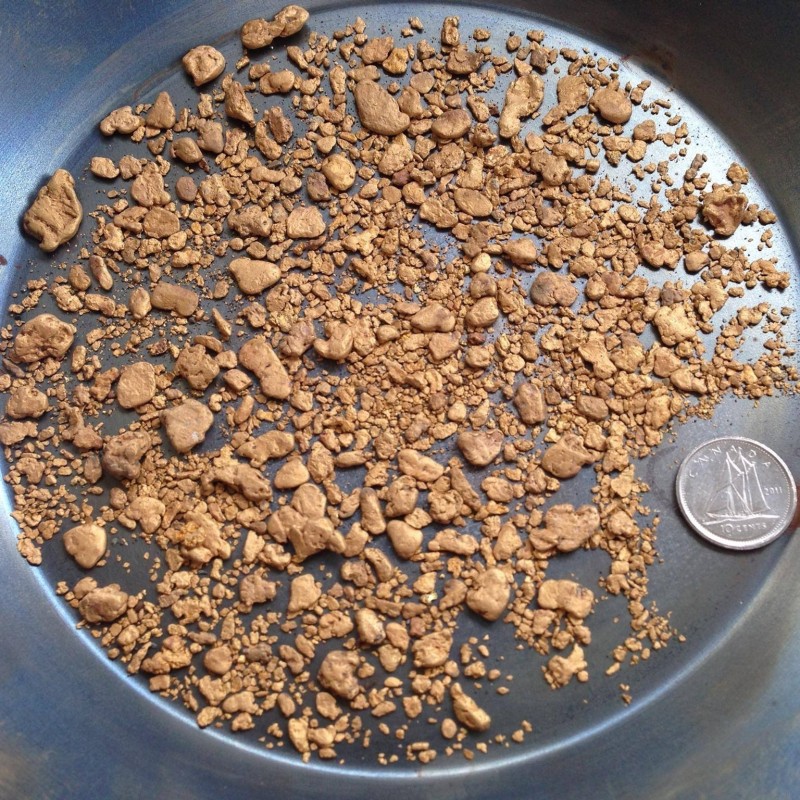
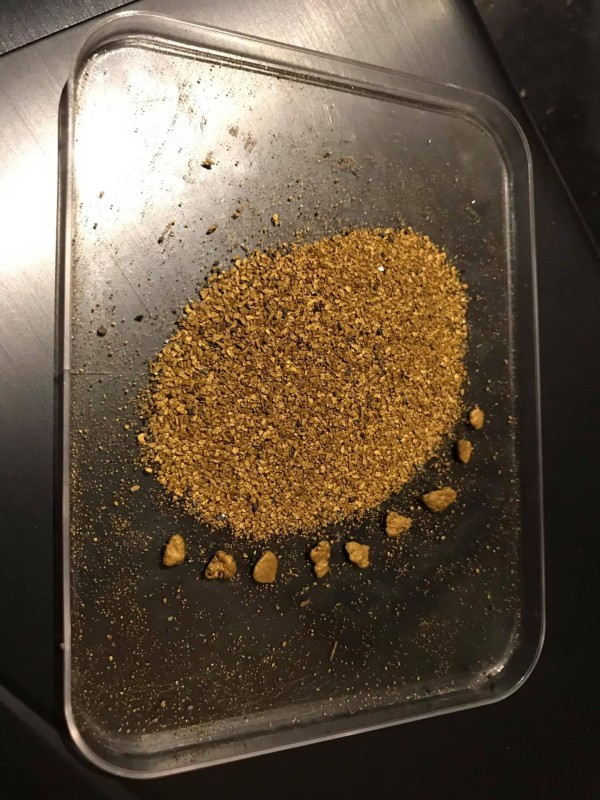
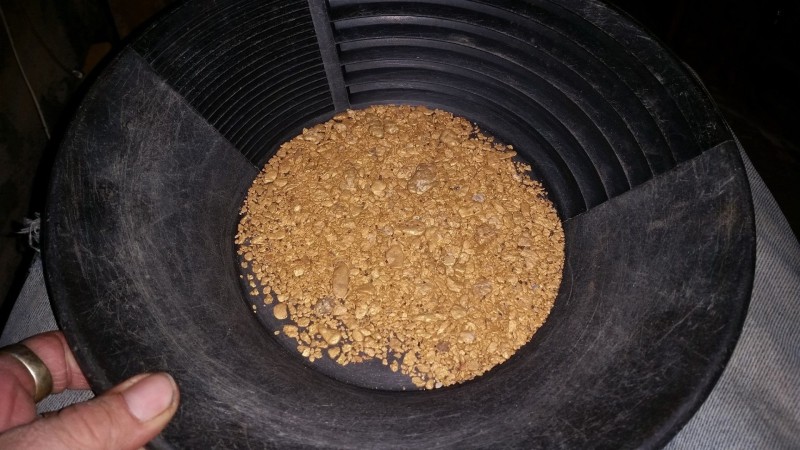
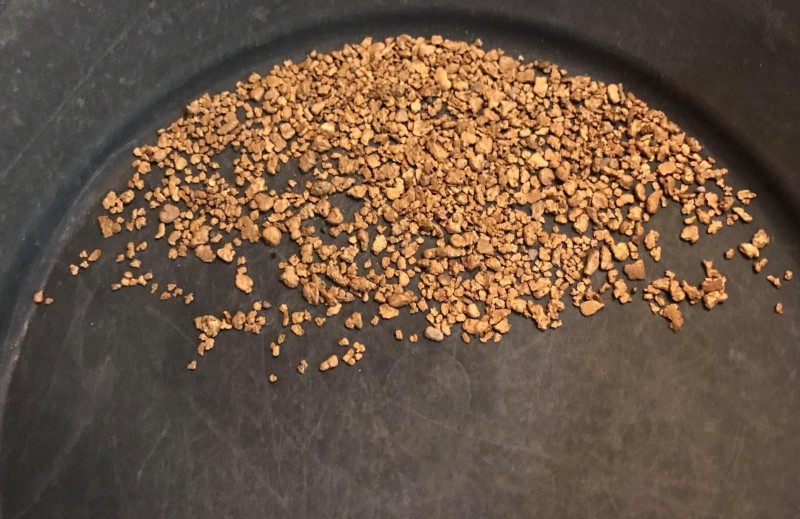
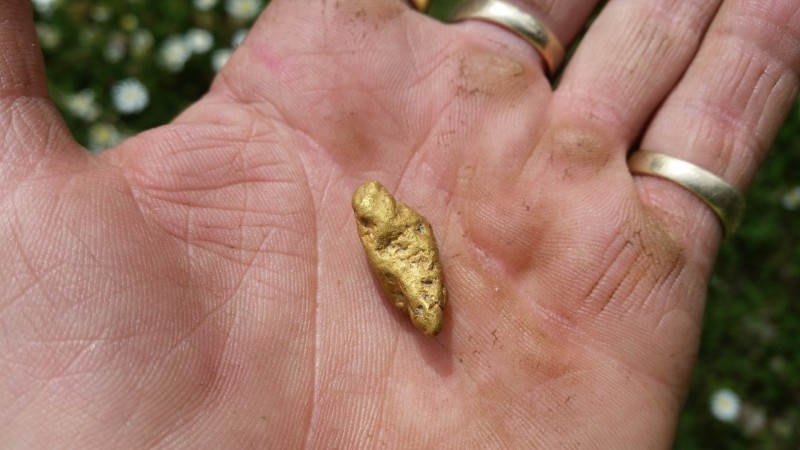
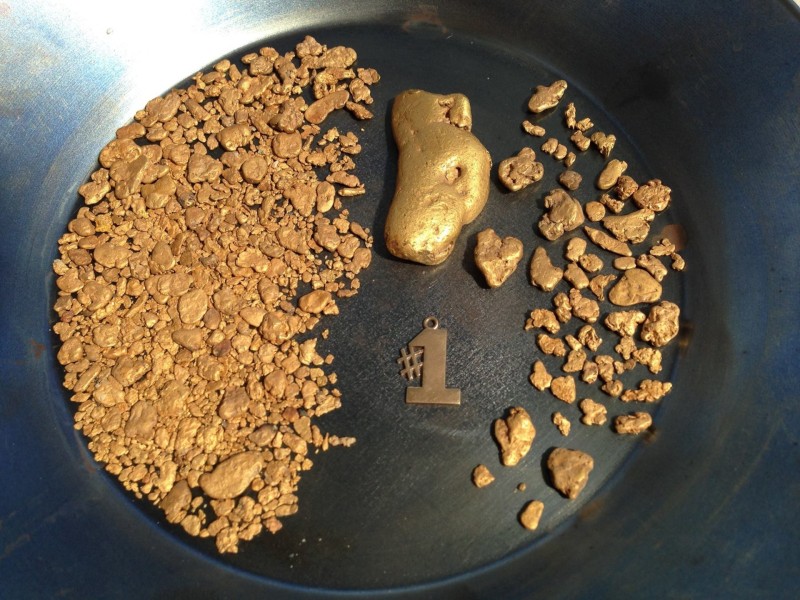
A 1000 Word Treatise On Nugget Detecting In The Sierra Nevada Mountains
in Detector Prospector Forum
Posted
You're a better writer than me.